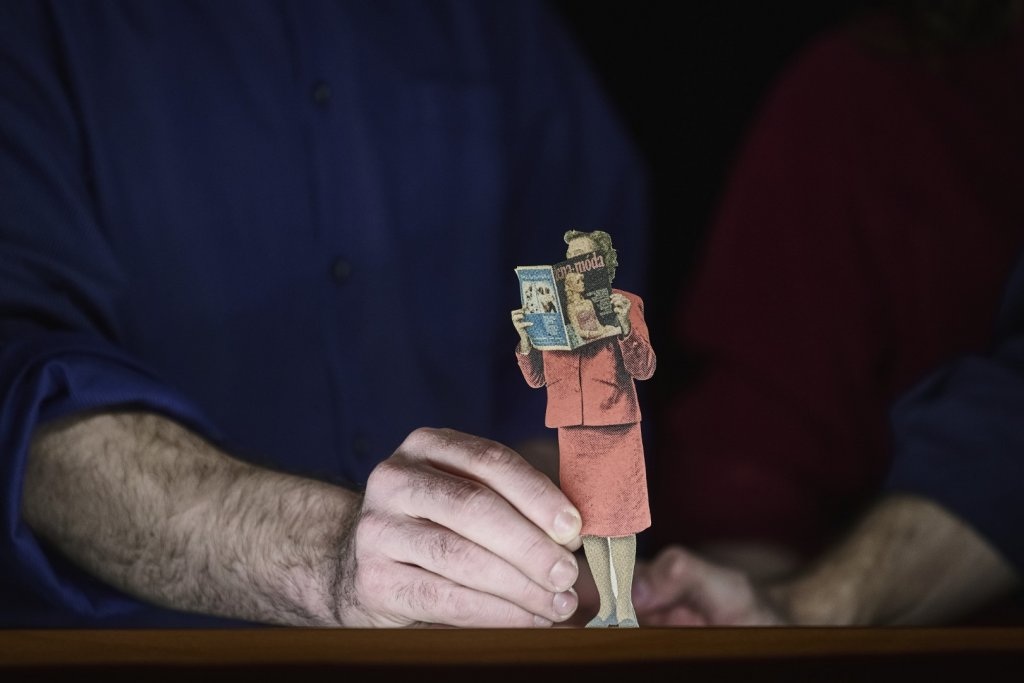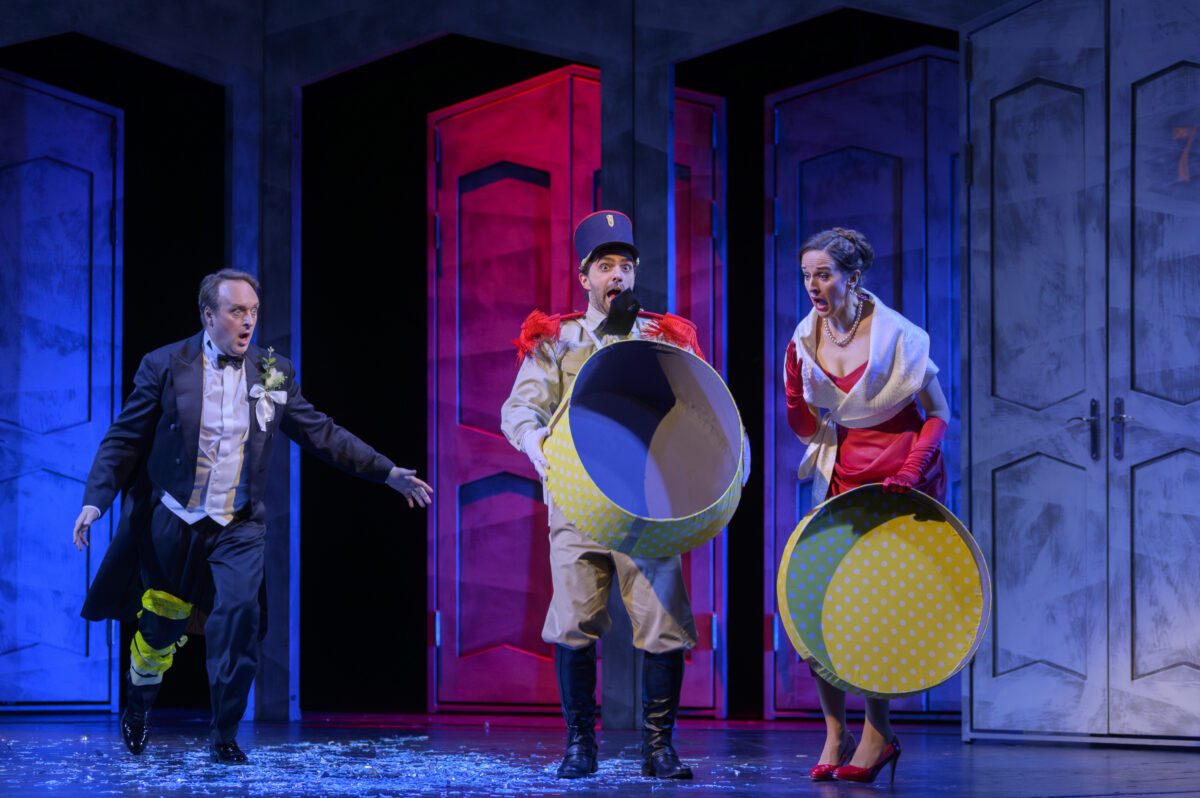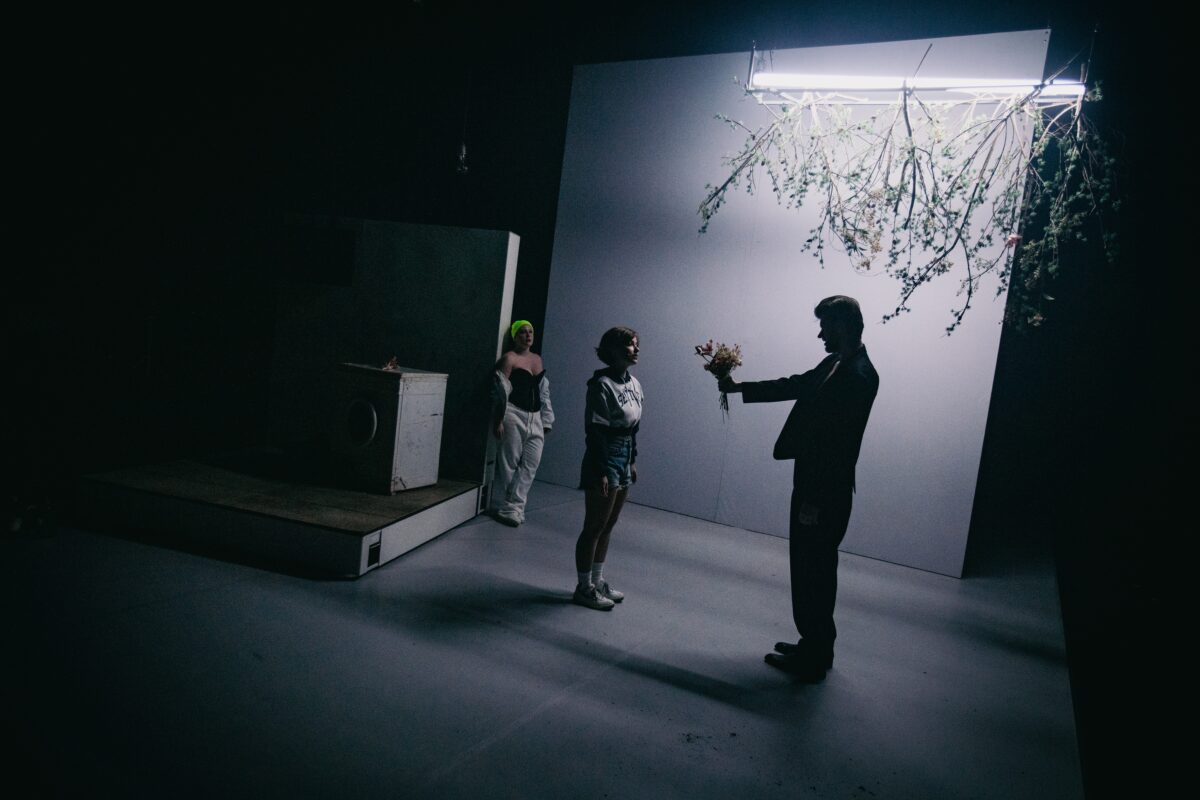Czech Puppet Theatre 2019–2023
Excursions into History, Objects and the Disappearance of Figurative Puppets
In the past four years, Czech puppetry, along with the rest of the world, experienced something that had seemed to be reserved for disaster films. The world was gripped by the SARS-CoV-19 pandemic and, for two years, most of life stopped. Many Czech puppeteers played an active role, sewing and distributing much-needed masks in the early days, streaming fairy tales to children, releasing recordings of their productions and even performing outside the windows of care homes. Throughout the pandemic, many rehearsed “for the drawer”, unsure of when theatres would reopen, and audiences were met with a flurry of new productions when the restrictions were lifted.
Works from a New Generation
Perhaps the most marked and still growing trend in contemporary Czech puppet theatre is the departure from figurative puppets and a turn towards object theatre. Non-narrative productions for adults are also starting to appear more frequently, particularly in small, experimental venues. Often initiated by graduates of the scenography program in the Department of Alternative and Puppet Theatre at the Academy of Performing Arts in Prague, such works accentuate visual style, sideline the acting element and could be described as “performance” or “animated installations”. Another noticeable trend is increased interest (particularly in public theatres) in the youngest group of spectators, aged 0-3, for whom most productions are staged as object or material-based theatre.
Director Jakub Maksymov’s productions are some of the most important object theatre works of the past four years. His creative practice deals rigorously with the theatre of objects and he also formulated the theoretical basis of the discipline in the academic environment. For Kladno’s Puppet Theatre Lampion, for example, he staged the production Stín kapradiny 1 (Shades of Fern), intended for adults and young people, in which the two hero-thieves on the run are portrayed by actors, but also two knives stabbed into the wooden scenography. The same team is also behind the interactive production Komodo, 2 based on motifs from the book of the same name by Petr Sís, a children’s author, illustrator and animator. Intended for a younger school-aged audience, it is highly interactive. Children sit around long tables arranged in a circle and, with the help of objects and puppets, a quintet of actors invites them to take an active role in the story of little Peter and his journey in search of Komodo dragons. At the very end, the children are given chalk and encouraged to draw their experiences of the journey on the table.
Last but not least, Maksymov also provided directorial supervision on Prefaby 3 (Prefabs) a truly remarkable production by Dominik Migač that deals with life in concrete-panelled highrise apartment buildings. Full of microstories of loneliness and anonymity, it also touches on the Chernobyl nuclear power plant disaster of 1986, which impacted the whole of Europe. With the exception of a man with a striking mask on his face, who is the unspecified driver of events, the performance contains no visible acting of characters. There are only suggestions of beings, imaginary puppets and future victims of the nuclear disaster, whose physical presence is replaced by the use of technology. Small servomotors, lights and cables with almost invisible USB ports have been ingeniously integrated into a highrise composed of pieces cast in real concrete, allowing spectators to see into three apartments and – with the help of projection – watch what happens inside.
O jak Otesánek 4 (O Is For Otesánek) is another, very successful, production that far surpasses the parameters of students’ degree work. The production’s interpretation of a well-known fairy tale relied on material. Set designer Berta Doubková depicted the human world as a jumble of used components from discarded computers (the puppets too are made of electrical condensers of various sizes), while the all-consuming intruder is made of a growing ball of ceramic clay.
A notable production from the world of contemporary Czech object theatre is Kabinet zázraků 5 (Cabinet of Miracles), from the repertoire of The Naïve Theatre in Liberec, directed by Michaela Homolová. The creative team selected the form of a “theatrical encyclopaedia” and guides the audience through the fantastic functioning of the planet Earth, just as Jan Amos Komenský explained it to young readers in his Orbis pictus. The “miracles”, gradually removed from large, old museum cabinets, or cabinets of curiosity, by a cast of five actors, play out before the audience’s eyes and showcase old puppetry gimmicks and tricks.
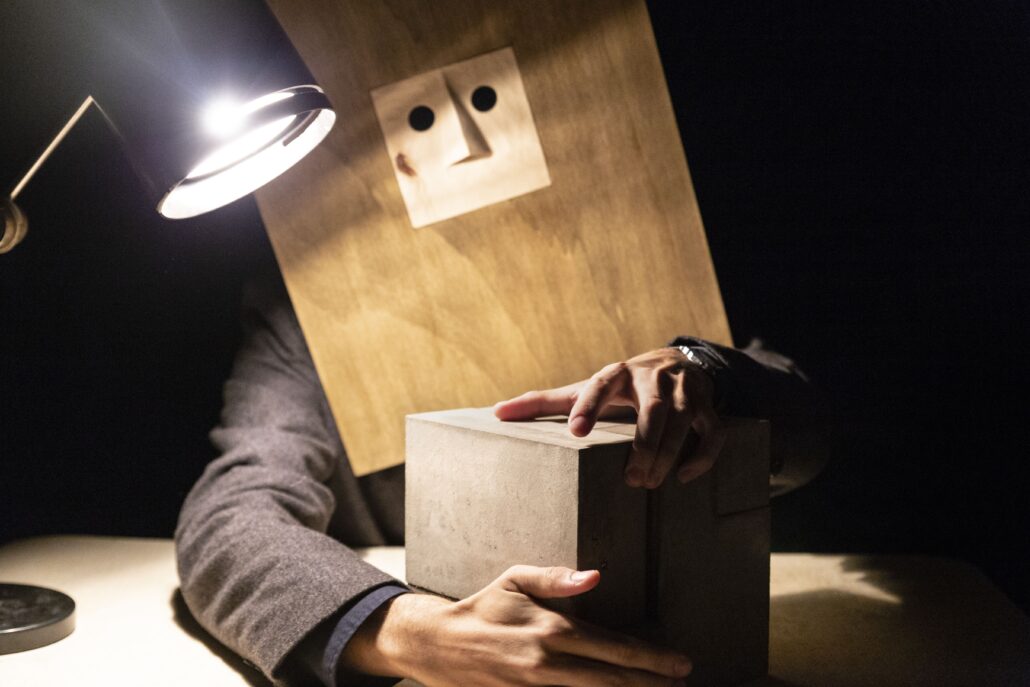
A Strong Tradition
Homolová is also responsible for the fanciful marionette production Babička Červené Karkulky dnes slaví narozeniny! 6 (Little Red Riding Hood’s Grandma is Celebrating her Birthday Today, 2021), also produced by The Naïve Theatre. Again, the text is authored by Vít Peřina, though this time it is not a fragmentary collection of keywords from an encyclopaedia, but a re-telling of the classic fairy tale about Little Red Riding Hood. The writer has expanded the story with wholly original motifs: Red Riding Hood makes a willful decision to visit Grandma’s house, which goes unnoticed by her overworked parents; the wolf survives in a peaceful ending; two gamekeepers come to Red Riding Hood and Grandma’s rescue, etc.It is impossible to not see this production’s link to the work of director Tomáš Dvořák (creator of the world-renowned productions The Three Musketeers and The Headless Knight and a frequent collaborator of Peřina), whose projects pursue an ongoing, unique evolution of the Czech marionette tradition.
Another successful production that develops a traditional theatrical form is DRAK Theatre’s production of Šípková Růženka 7 (Sleeping Beauty). Created by dramaturg Tomáš Jarkovský and director Jakub Vašíček, it is conceived as a slapstick comedy performed by hand puppets. To transport the classic fairytale to an entirely different genre, Jarkovský and Vašíček changed the narrative point of view, the Wicked Fairy became the main protagonist. Her escapades and endless, stubborn
attempt to infiltrate the castle in order to cause trouble for a little girl who, unlike her, has been given everything by fate even evoke some sympathetic audience reactions. Still, such productions represent a return to historical roots that is quite unusual for Czech puppetry as a whole.
Thematic Connections in Czech Puppet Theatre
We’ll now shift to a focus on the strong thematic connections that have appeared in Czech puppetry in recent years. The duo Vašíček-Jarkovský, who produced the above-mentioned production of Sleeping Beauty, have long created work for teenage audiences within and beyond their home venue, DRAK Theatre, and it’s no accident they produced a trilogy devoted to freedom there. It consists of productions of Bílý tesák 8 (White Fang) based on Jack London’s celebrated work of the same name, Cesta 9 (The Road), inspired by Jack Kerouac’s iconic novel On the Road and Mark Twain’s Huckleberry Finn. 10 Using live cinema techniques, White Fang examines the fate of a wild predator who comes into the care of kind humans. Here, the camera is the primary means of storytelling – the audience follows the events through the wolf’s eyes. The creative team altered the ending, with Fang refusing the calm life of a domesticated animal and escaping to freedom. Milan Hajen, who interprets the wolf, gets into a stopped car in the production’s final footage and drives away, just like the gang of three youths in The Road, who hitchhike on an adventurous journey through the United States. Their goal is San Francisco, a city full of open-minded hippies. Though not a puppetry production, The Road works with objects and materials in a very creative way – a long roll of paper successfully evokes an endless American highway, for example. While the previous two productions’ protagonists were more or less running from themselves than from any existential threat, Huckleberry Finn and the runaway enslaved person Jim are also on the run and express the pros and cons of living independently as an adolescent. Again, working with the objects on stage is a key part of the storytelling.
The topic of freedom appears with crystalline clarity in another production at DRAK Theatre, this time directed by the successful dancer and choreographer Miřenka Čechová. Her adaptation of Petr Sís’s well-known book, Zeď 11 (The Wall) speaks of life in Czechoslovakia from 1948-1989 and the longing to escape the iron curtain and the reach of the totalitarian state. Again, puppets are not part of the production, but the story is told with the help of distinctive props (such as oversized communist symbols) and animal masks.
The complexity of central European history is the main theme of another production for older school-aged children – Putování dobrého Hanse Böhma Evropou 12 (The Journey of the Good Hans Böhm Through Europe), directed by Tomsa Legierski, which draws on the true story of a boy from a multi-national family thrown into the maelstrom of World War II. The simple, turned wooden puppets used in the piece, which are assembled from small components, are very telling, since Hans Böhm must also compose his identity differently according to the environment he is in and what will be most advantageous for the given – often quite tense – situation.
Director Jan Jirků is another artist whose recent work has dealt with twentieth-century history and how to communicate it to children and adolescents. At Minor Theatre, to which his work is inseparably linked, he has staged two productions depicting the 1950s in Czechoslovakia — one through the eyes of a social outcast, an unjustly imprisoned young man13 and the second through the story of the regime’s favourite hero, runner Emil Zátopek. 14 Both productions are complex, theatrical narratives told through acting, object manipulation, puppetry, masks and live music. The same characteristics are also present in Bratři naděje 15 (Brothers of Hope), one of the most significant productions not only in Jirků’s career, but in Czech puppet theatre of recent years. This production too follows the blueprint of a true story about a famous Czech marionette family, whose artistic roots stretch back to the eighteenth century. The four Kopecký brothers, who defected from the Austrian army during World War I, later became members of the Czechoslovak Legions. With the help of puppet theatre, they improve morale in their unit and even recruit new members. The production is captivating, touching and a brilliant example of modern Czech puppetry.
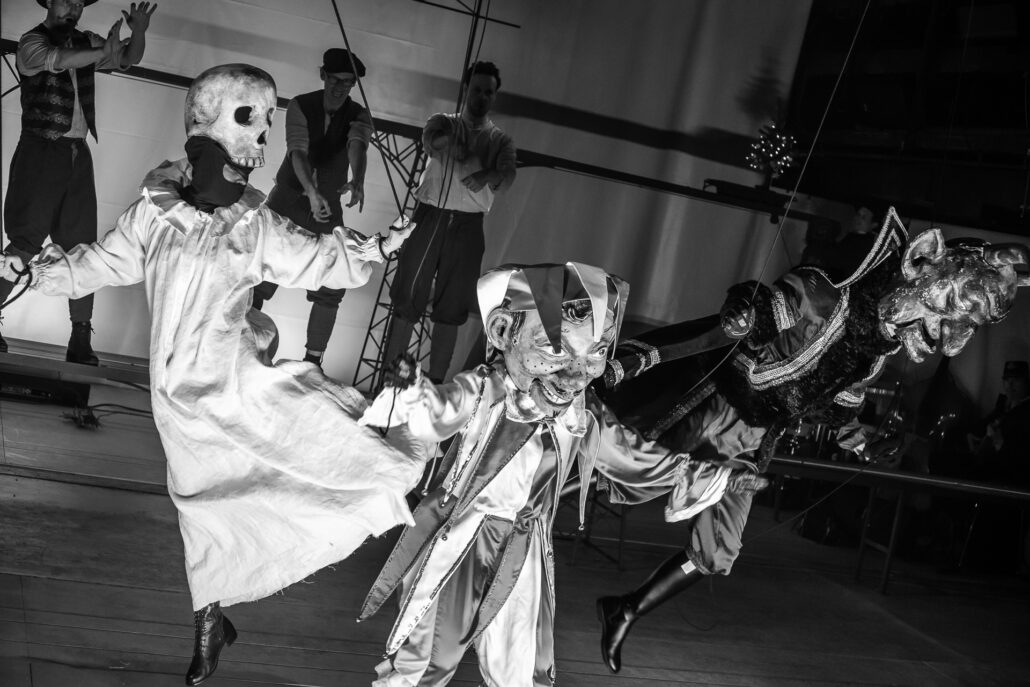
1 Josef Čapek, Jakub Maksymov, Matouš Danzer: Stín kapradiny, direction: Jakub Maksymov, Kladno Municipal Theatre, premiere 22. 2. 2020, Puppet Theatre Lampion, Kladno.
2 Komodo, direction: Jakub Maksymov, Kladno Municipal Theatre, premiere 20. 6. 2021, Puppet Theatre Lampion, Kladno.
3 Dominik Migač: Prefaby, direction: Dominik Migač and Jakub Maksmov, Plata Company, premiere 25. 7. 2019, Department of Alternative and Puppet Theatre, Prague.
4 Collective authorship: O jako Otesánek, direction: Viktor Prokop, TMEL, premiere 3. 6. 2021, Department of Alternative and Puppet Theatre, Prague.
5 Hza Bažant, Michaela Homolová, Filip Homola: Kabinet zázraků, direction: Michaela Homolová, premiere 13. 6. 2020, The Naïve Theatre, Liberec.
6 Vít Peřina: Babička Červené Karkulky dnes slaví narozeniny!, direction: Michaela Homolová, premiere 9. 10. 2021, The Naïve Theatre, Liberec.
7 Tomáš Jarkovský, Jakub Vašíček: Šípková Růženka, direction: Jakub Vašíček, premiere 5. 9. 2020, DRAK Theatre, Hradec Králové.
8 Jack London, Tomáš Jarkovský, Jakub Vašíček: Bílý tesák, direction: Jakub Vašíček, premiere 3. 3. 2018, DRAK Theatre, Hradec Králové.
9 Tomáš Jarkovský, Jakub Vašíček: Cesta, direction: Jakub Vašíček, premiere 15. 11. 2019, Studio DRAK Theatre, Hradec Králové.
10 Mark Twain, Tomáš Jarkovský, Jakub Vašíček: Huckleberry Finn, direction: Jakub Vašíček, premiere 25. 2. 2023, DRAK Theatre, Hradec Králové.
11 Petr Sís, Miřenka Čechová, Dominika Špalková: Zeď aneb Jak jsem vyrůstal za železnou oponou, direction: Miřenka Čechová, premiere 21. 9. 2019, DRAK Theatre Studio, Hradec Králové.
12 Petra Kosová, Tomsa Legierski. Putování dobrého Hanse Böhma Evropou, direction: Tomsa Legierski, premiere 19. 12. 2020, ALFA Theatre, Pilsen.
13 Jan Jirků, Adéla Balzerová: Hon na Jednorožce, direction: Jan Jirků, premiere 15. 11. 2009, Minor Theatre, Prague.
14 Jan Jirků: Zá-to-pek!, direction: Jan Jirků, premiere 6. 10. 2019, Minor Theatre, Prague.
15 Jan Jirků, Jakub Kopecký: Bratři naděje, direction: Jan Jirků, premiere 22. 9. 2021, Minor Theatre, Prague.
categories
Puppet Theatre / Seasons’ overview
AUTHOR
Kateřina Dolenská

 Learn
Learn

